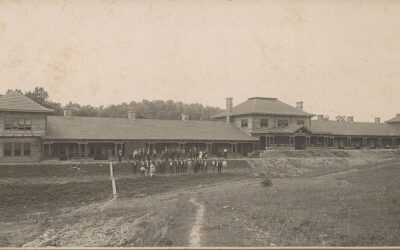Around the 1st century, a disease was introduced into Western Civilization that changed the course of history. A large-scale epidemic occurring in the Roman Empire around 100 AD resulted in the death of 7 million people and was likely integral to the empire’s fall. By the 7th century, this disease had become endemic in Europe and intermittently resulted in epidemics among the population, leading to 400,000 deaths annually. With the expansion of Europeans into the Americas, the disease resulted in the decimation of the American Indian population and led to the disappearance of the Aztec and Incan populations. The horrific disease – variola, commonly known as smallpox or the “speckled monster” in 18th century Europe, would appear suddenly and cause a fatality rate of up to sixty percent in adults and ninety percent in infants. Disfiguring scars and high rates of blindness affected approximately a third of survivors who were subsequently immune to the illness. Physicians employed this immunity in the 18th century through the inoculation. Fluid from a smallpox pustule of an infected individual would be inserted into an incision, usually on the arm of the receiving individual, in a procedure known as variolation. This procedure usually resulted in the individual experiencing milder symptoms.
While variolation was practiced across Europe for several hundred years, it was in Boston, Massachusetts, during the Great Epidemic of 1721, that the process was scientifically demonstrated to provide effective management of an epidemic outbreak. In 1721 a ship from the West Indies ported into Boston Harbor carrying individuals infected with smallpox; many individuals born in the Americas had not been previously affected by the illness. An epidemic quickly ensued, infecting half of Boston’s population, 12,000 people. Against much opposition from the established medical community and the public, Reverend Cotton Mather, a Harvard Graduate aware of variolation, convinced only one physician in Boston, Dr. Zabdiel Boylston, to employ the practice to combat the illness. Reverend Mather and Dr. Boylston documented the mortality rate of individuals who contracted the disease naturally versus by the process of variolation. Natural infection resulted in fourteen percent mortality, and those inoculated had a mortality rate of two percent. This data eventually convinced the medical community, and by 1757, thousands of children across England were inoculated. One of those children was Edward Jenner, eight years old, of Gloucester, England.
That eight-year-old would become Dr. Edward Jenner, a physician and surgeon with a thriving practice in Gloucester, England. During his surgical apprenticeship, one of his patients, a young dairymaid, stated, “I shall never have smallpox for I have had cowpox. I shall never have an ugly pockmarked face.” It was a common belief that dairymaids were somehow protected from smallpox. Dr. Jenner always remembered the statement, and in 1796, twenty years later, as a respected physician and scientist of the Royal Society, he harvested fluid from a cowpox lesion from the hand of a dairymaid and injected it into the arm of an eight-year-old boy. The boy developed discomfort in the armpit, fever twenty-four hours later, mild loss of appetite, and fatigue for one week following the injection, with no further symptoms. Two months later, Dr. Jenner inoculated the same boy with the smallpox virus. The boy did not develop any evidence of smallpox disease, and immunity was assumed. Dr. Jenner was able to replicate his work in many other patients and convince the medical community in England to abandon inoculation and accept vaccination (a term coined by Dr. Jenner after the Latin word vacca – meaning cow). In 1840, variolation with the smallpox virus was forbidden and replaced with vaccination. Worldwide vaccination programs starting in the 1950s resulted in the disease being declared eradicated in 1980. Smallpox vaccination is not currently recommended.
In 1918, the modern world’s first pandemic occurred. Spanish influenza swept across the world, infecting an estimated 500 million people, and resulting in the death of 20-30 million people. Death was usually a result of pneumonia that developed due to lung damage from the virus. The medical community rushed to create a vaccination for the illness causing the Spanish influenza; however, those efforts proved futile because they were incorrect in identifying the actual cause.
Following the Spanish influenza pandemic, Thomas Francis, Jr. and Dr. Jonas Salk developed a process for growing the virus in fertilized hen eggs, purifying, and inactivating it. Francis and Salk were able to effectively vaccinate the U.S. Military in the 1940s during World War II. Eventually, with others, they would develop the first polio vaccination, achieving eradication of the polio virus from the U.S.
Vaccination programs have grown to include vaccinations against diphtheria, tetanus, and pertussis, as well as vaccination against varicella (chicken pox) and measles/mumps/rubella during the first two years of life. Immunization against streptococcus pneumoniae and haemophilus influenzae has significantly reduced infant mortality and morbidity.
Vaccinations work by imitating an immune response. They may contain a weakened live virus modified so it can no longer cause disease or may include only protein particles that resemble the virus or bacteria and cannot result in the active disease. These antigens stimulate the body to make protective antibodies. Live virus vaccines usually require two boosters, while protein particle vaccines require three or more boosters to achieve adequate immunity. When exposed to that specific virus or pathogen in the future, the body can more quickly mount an immune response to combat the infection, resulting in non- or reduced illness and decreased transmission of the infection.
Recently, COVID-19 prompted a new approach to vaccine creation: mRNA vaccine technology. This technology uses a genetic blueprint instructing the host to create a protein that stimulates an immune response. This vaccine technology allows for more rapid vaccine production. While some vaccinations may confer near-lifelong immunity, others, such as the flu vaccine, require repeated boosters. The CDC recommends annual flu vaccination due to the tendency for the virus to mutate. Flu vaccines may be updated annually to reflect changes in the virus. Vaccination has revolutionized medicine, and the way humans interact with disease. While vaccines have saved millions of lives, vaccine reactions and side effects may occur. If you have questions, please discuss which vaccinations are suitable for you with your physician!
Kendall Wagner, M.D. is a regular healthcare contributor to Do South® Magazine.
Chaffee Crossing Clinic
11300 Roberts Boulevard, Fort Smith, Arkansas
479.242.5910
chaffeecrossingclinic.com




